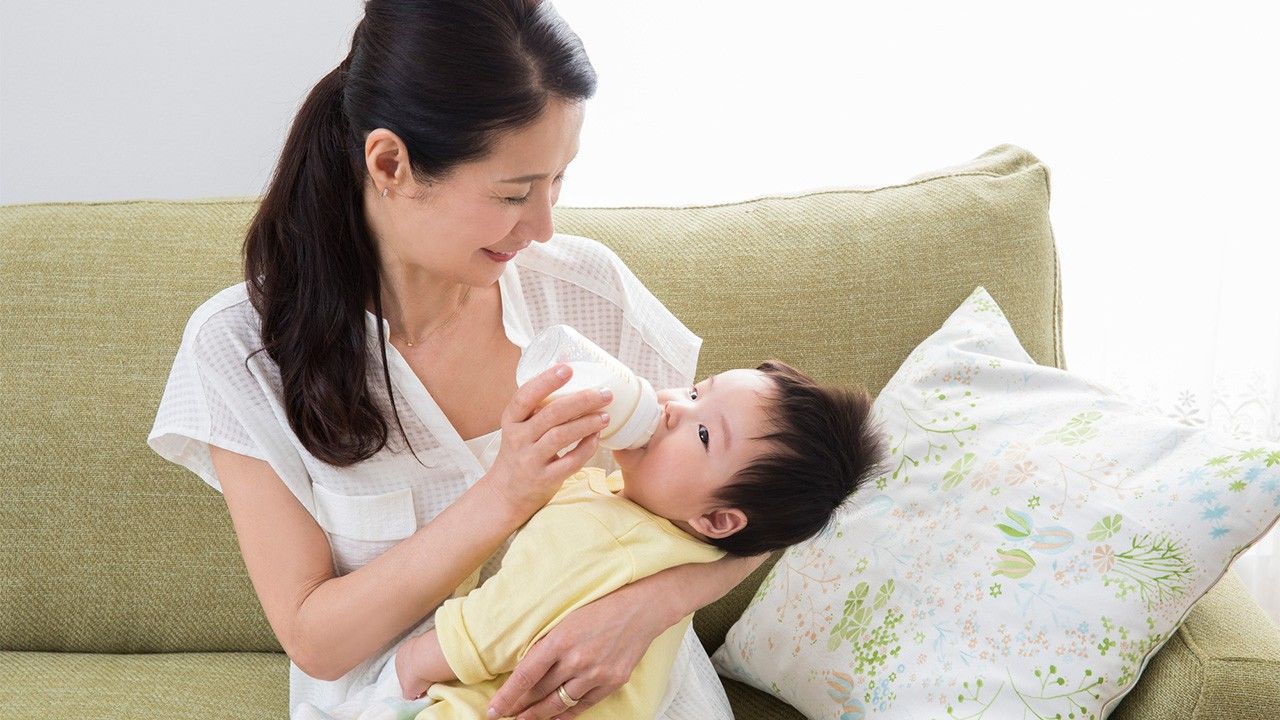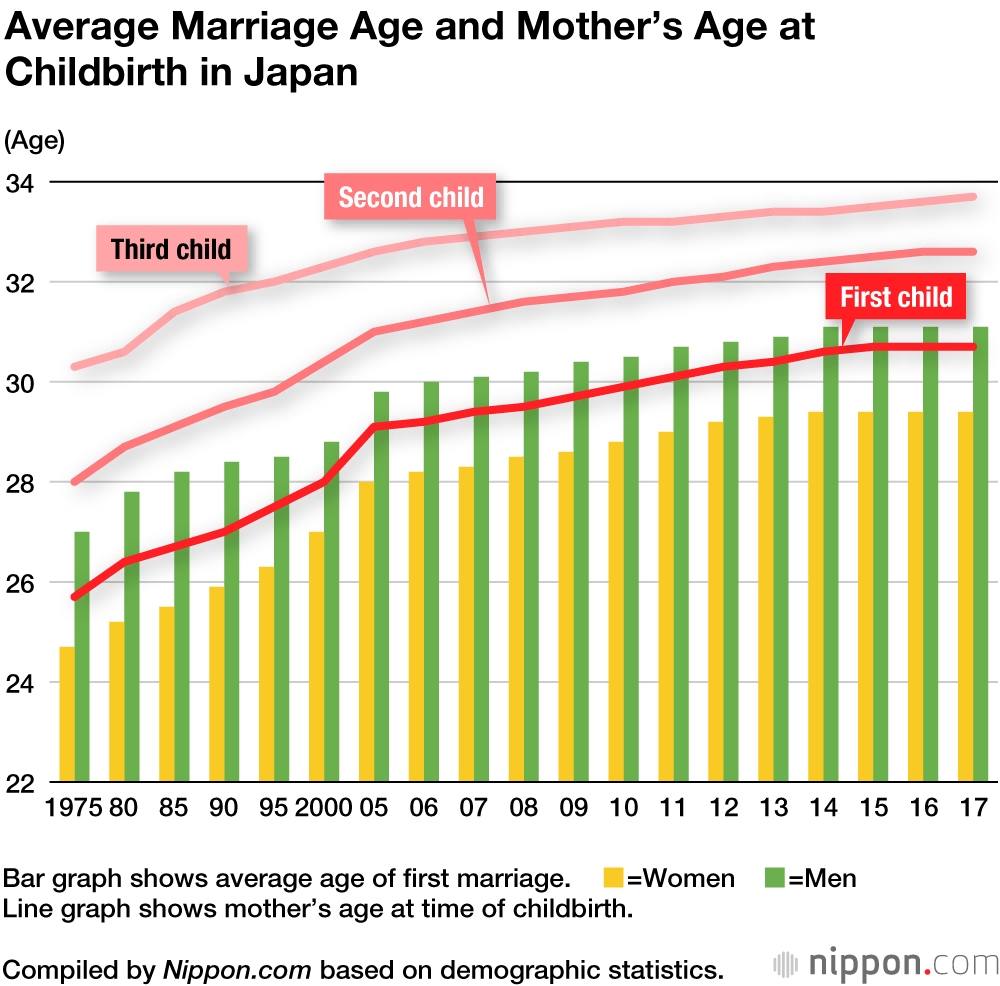
Later Starts to Family Life Contribute to Japan’s Birth Decline
Society Family- English
- 日本語
- 简体字
- 繁體字
- Français
- Español
- العربية
- Русский
Around three decades ago, the social pressure on Japanese women to get married was unbelievably intense compared to present-day standards. It was thought ideal to tie the knot by 24, with 25 just barely acceptable, and any unmarried woman beyond that age considered a “leftover.”
Since the introduction of the Equal Employment Opportunity Act in 1986, more women have entered the workforce and lifestyle options and values have diversified. Demographic statistics show that the average age to get married in 1985 was 28.2 for men and 25.5 for women, whereas by 2017 the average had risen to 31.1 for men and 29.4 for women. Although the curse of being viewed as a “leftover” has been dispelled, the trend toward later marriages is a factor underlying the declining birth rate in Japan.
The average age of mothers at their first childbirth has also been rising. That average was 30.7 in 2017, five years older than in 1975 and four more than in 1985. The average age of giving birth to the first child is also said to influence whether a couple decides to have a second or third child.
In 2017, 606,866 couples got wed in Japan, meaning the marriage rate was 4.9 per 1,000 persons. Both were record lows. With the combination of late marriages and childbirths, there seems little chance of stemming the downward trend in births.
The birth decline and aging population are shrinking the Japanese workforce, while also increasing the number of people to support, inevitably raising the burden on the working population. Japan’s falling population is leading to real problems such as labor shortages and a contraction of markets. The government is trying to provide support by eliminating waiting times to enter daycare centers, but it is not easy to introduce immediately effective policies.
Other factors influencing the fall in the number of births are the absence of conditions that would allow women who enter the workforce to balance a job and child-raising, as well as the persistence of deep-rooted notions about gender roles within society and the household.
(Translated from Japanese. Banner photo © Pixta.)
